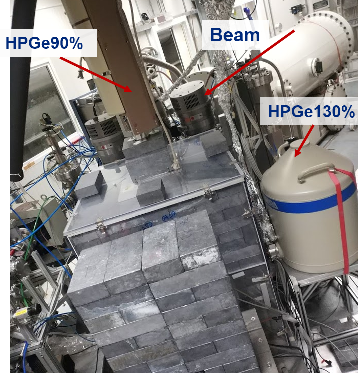21Ne(p,γ)22Na
PIs: Francesca Cavanna, Sandra Zavatarelli
Astrophysical Motivation
The 21Ne(p,γ)22Na reaction plays a significant role in the neon-sodium cycle during hydrogen burning in stars. This cycle is observed in several astrophysical scenarios, including asymptotic giant branch stars, novae and supernovae contributing to the production of neon and sodium isotopes.
To enhance the accuracy of predicted nucleosynthesis yields, there is a pressing need for new experimental investigations directly measuring the cross sections of this reaction at energies relevant to astrophysics. In particular, the precise determination of the21Ne(p,γ)22Na reaction rate is essential for understanding the production of 22Na in novae and supernovae. In the temperature range relevant to this astrophysical scenarios, the reaction rate is dominated by low energy resonances.
Experimental Aims
Five low energy resonances were directly measured at LUNA in the center of mass energy range 120-350 keV. At the novae temperature range, the reaction rate is mainly governed by the Er = 126 and 272 keV resonances. At higher temperatures relevant to supernovae, 0.5 GK < T < 0.7 GK, the Er = 271, 290, and 352 keV resonances became prominent. The resonance strengths and the branching ratios of the corresponding levels were determined with unprecedented precision.
Experimental setup
The reaction was measured using the windowless gas target setup available at LUNA. The recirculation mode was adopted considering that both natural and enriched 21Ne are very expensive. The prompt -rays produced from the reaction were detected with two high purity germanium detectors of 90% and 130% relative efficiency, located at two different positions along the beam axis. Both detectors were surrounded by lead and copper shielding to reduce the laboratory environmental background. The entire lead castle was encapsulated in a Plexiglas anti-radon box filled with an over-pressure of N2 to avoid radon gas inside the lead shielding.


